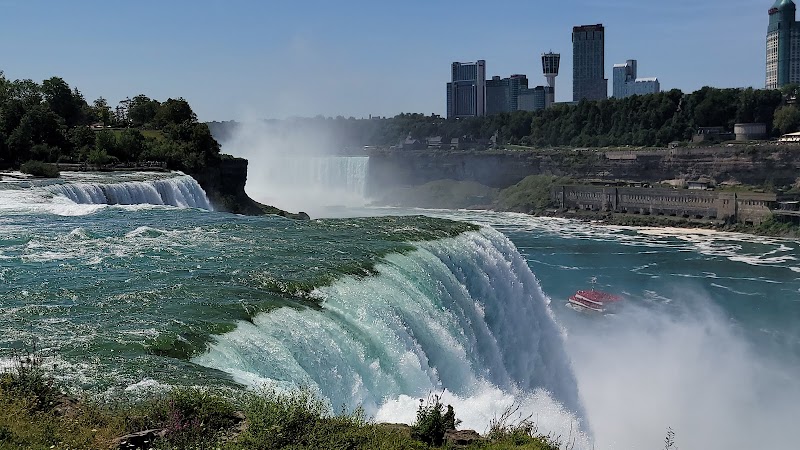
Wings in the Wild: Exploring the Annual Bird Watching Festival in South Wales, New York
Every spring, South Wales comes alive with the Annual Bird Watching Festival—a perfect blend of immersive hiking and guided birding experiences. Whether you’re an avid birder or a casual nature lover, this event offers practical trails, expert tips, and encounters with vibrant birdlife waiting just beyond Buffalo’s doorstep.
Bring Sturdy Footwear
Trails can get muddy in spring; waterproof hiking boots with good traction will keep you steady through slippery sections.
Pack Binoculars and Field Guide
Essential tools for spotting and identifying species; a local field guide enhances your ability to engage with the birds you encounter.
Hydrate Regularly
Spring humidity can catch visitors off-guard; carry at least 1 liter of water and take breaks to stay refreshed during hikes.
Arrive Early
Bird activity peaks at dawn, and trail crowds are lighter in the mornings, creating ideal conditions for observation and photography.
Wings in the Wild: Exploring the Annual Bird Watching Festival in South Wales, New York
South Wales, New York, transforms every spring into a vibrant stage during its Annual Bird Watching Festival, an event that invites adventurers and casual observers alike to engage with the vibrant life of local bird species. The festival centers around guided hikes that thread through the varied terrain of Cazenovia Creek and adjacent森林 areas, boasting trails generally between 3 to 6 miles, with gentle elevation gains of 200 to 400 feet. These paths wind through hardwood forests that seem to whisper secrets through leaves, while open fields offer sweeping views where hawks and falcons circle overhead, daring you to keep pace.
The experience balances intensity and accessibility—the trails are firm and mostly even, suitable for beginner and intermediate hikers but demanding in moments where steep slopes challenge footing beneath fluttering branches. The creek plays its part too, murmuring encouragement as it pushes water downstream, setting a rhythm for birders to follow. Timing is key; early mornings reveal the densest wildlife activity, with songbirds greeting dawn while the air still holds its chill.
Practicalities ensure the outing is as smooth as it is memorable: sturdy waterproof boots are necessary for muddy patches, hydration packs are recommended given the humid spring weather, and binoculars are a must to catch fleeting glimpses of rare warblers and woodpeckers. Avoid crowds by arriving on weekday mornings during the festival's first weekend, when the woods still feel like a private gallery.
Alongside hikes, seminars and identification workshops give newcomers and seasoned birders alike a chance to sharpen their skills. Local experts share insights on the birds’ seasonal behaviors, enhancing the adventure with purpose. Outside the main event, quieter spots like the lesser-known Pine Hollow Preserve offer intimate encounters with nature and fewer distractions.
South Wales' festival respects the wild — birds are observed, not disturbed, fostering an engagement grounded in respect and curiosity. The Annual Bird Watching Festival is a measured yet thrilling invitation to witness life fiercely itself, urging respect for its pace and presence. Whether spotting a flash of red in a robin’s breast or hearing the sudden call of a barred owl, visitors leave with fresh eyes tuned for wonder and reasoned readiness to meet the wild head-on.
Nearby Trips
All Adventures
Boat Charters
Water Activities
Adventures near South Wales, New York
Discover the unique and memorable adventures that make South Wales, New York special.
Frequently Asked Questions
What types of birds can I expect to see during the festival?
The festival showcases a variety of species including warblers, woodpeckers, hawks, and occasionally eagles. Spring migration brings the highest diversity, while summer hosts nesting birds and fall highlights migratory raptors.
Are the hikes suitable for families with children?
Yes, the trails mostly accommodate families. The moderate distances and gentle elevation make it feasible for older children. Young kids may need breaks, so plan accordingly.
Is there an entry fee for the festival activities?
Most events, including guided hikes and seminars, are free or run on a donation basis. Special workshops or equipment rentals might have nominal fees.
Can I bring pets on the bird watching trails?
Pets are generally discouraged on festival trails to avoid disturbing wildlife and other participants. Check specific event guidelines before bringing animals.
What should I do if I spot a rare or unusual bird?
Visit the festival's information tent or use a local birding app to report sightings. Sharing observations helps organizers track species and enhances the overall experience.
Are there any local accommodations recommended for visitors?
Buffalo offers a wide range of lodging options less than 30 minutes away. Staying there provides access to other regional attractions in addition to the festival.
Recommended Gear
Waterproof Hiking Boots
Keeps feet dry and provides grip on muddy or slick trails.
Binoculars
Crucial for spotting distant or well-camouflaged birds.
Lightweight Waterproof Jacket
Protects against sudden rain and wind common during festival periods.
Insect Repellent
Helps reduce bites from mosquitoes and ticks when foliage thickens.
Local Insights
Hidden Gems
- "Pine Hollow Preserve offers quieter, less traveled paths with excellent early morning bird sightings."
- "The old mill ruins near Cazenovia Creek provide a scenic backdrop and attract waterfowl rarely seen on main trails."
Wildlife
- "Look for pileated woodpeckers tapping insistently on tree trunks and eastern towhees rustling in the underbrush."
- "Raptors like red-tailed hawks use thermals above the open fields, putting on an effortless aerial display."
History
"South Wales sits on lands historically traversed by the Seneca Nation and European settlers who valued the region’s rich hunting and foraging grounds. The festival honors this heritage by emphasizing respect for natural cycles."
